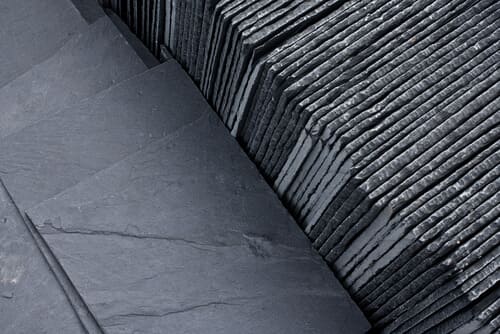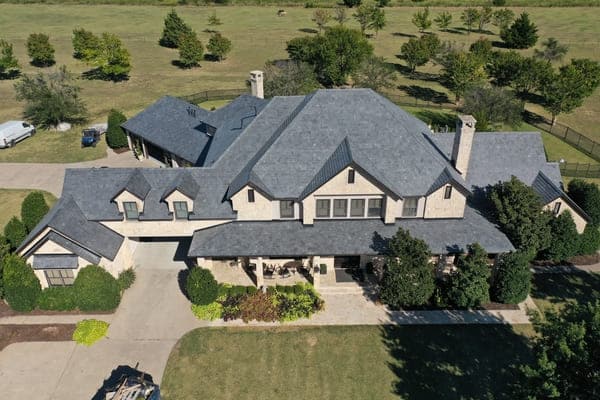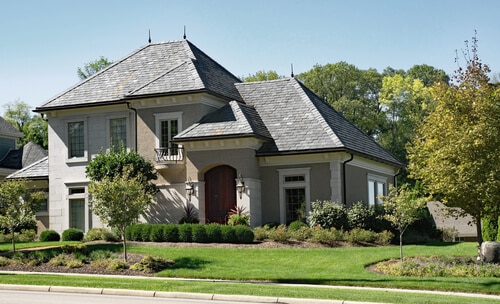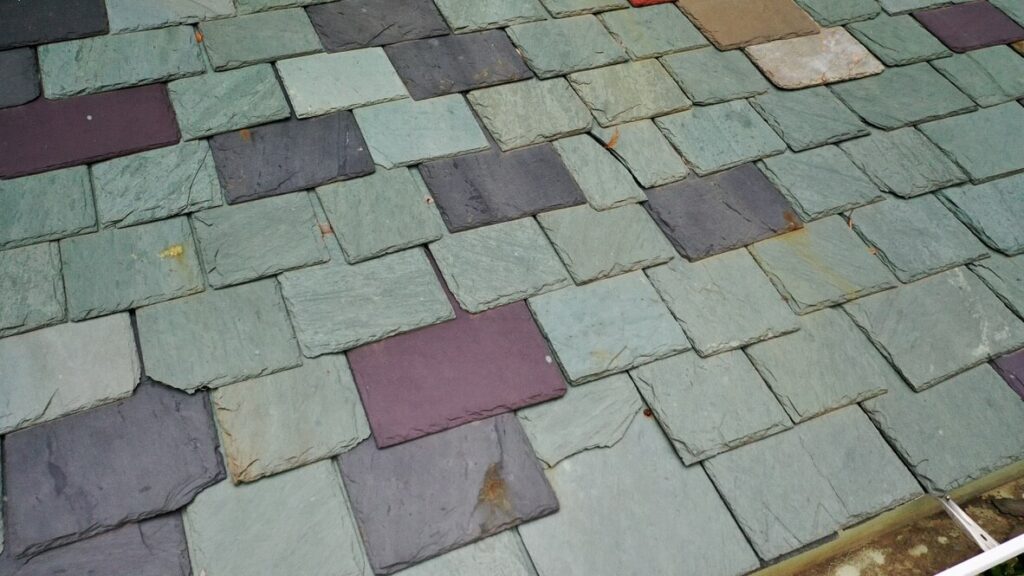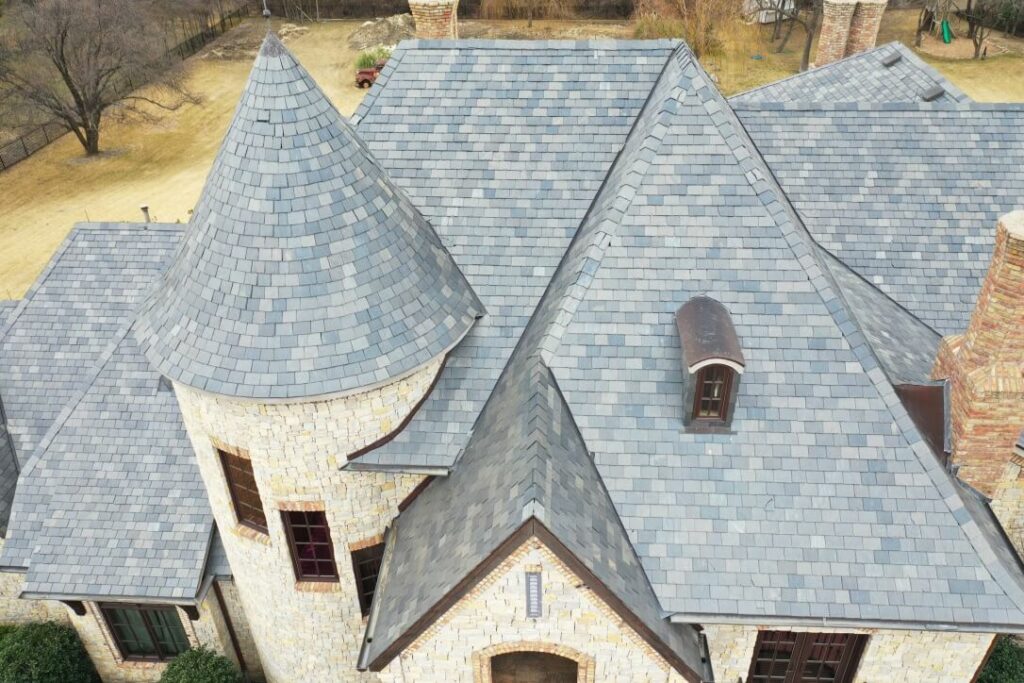What is Slate Roofing?
Slate roofing is a high-quality roofing system made from metamorphic rocks that derive from clay or volcanic ash. As a natural stone, slate roof tiles are not only one of the most naturally stunning roofing tiles on the market, but also one of the most durable roofing options—lasting up to 200 years with proper installation and maintenance.
Dating back to 1300 CE, slate was first recorded as a roofing material for castles and other historic buildings in North Wales, England before expanding to the rest of the world. In the United States, slate is primarily mined today in New York, Pennsylvania, Vermont, and Virginia, though large sources are also found in other countries such as Italy, Brazil, India, and beyond.

